TRI Green Chemistry and Green Engineering Reporting
Green chemistry is the design of chemical products and processes that use safer inputs and minimal energy while preventing the generation of waste.
Green engineering is the design, commercialization, and use of processes and products in a way that reduces pollution, promotes sustainability, and minimizes risk to human health and the environment without sacrificing economic viability and efficiency.
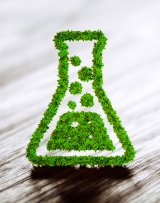
- Background
- Chemical-specific principles
- Tracking green chemistry and engineering practices with TRI
- Green chemistry and engineering examples
- EPA resources
Background
Both green chemistry and green engineering embrace the idea that decisions to protect human health and the environment can have the greatest impact and cost-effectiveness when applied early, in the design and development phase of a process or product.
According to the waste management hierarchy established by the Pollution Prevention Act of 1990, source reduction should be considered first when there is the potential to generate waste. Engagement in green chemistry and green engineering is a way for companies to make advances in preventing pollution at its source.
Chemical-Specific Principles
- Design chemicals and products to be safe for human and environmental health
- Design processes to run safely and efficiently at or near ambient conditions
- Use lifecycle thinking to minimize waste and design for degradation or circularity after a product is used
- Integrate environmental impact assessment tools and analyze in real time to prevent pollution
- Ensure that input materials are inherently benign
- Avoid chemical derivatives
- Use catalysts, not stoichiometric reagents
Modified based on EPA’s green engineering webpage and the 12 Principles of Green Chemistry.
Tracking Green Chemistry and Engineering Practices with TRI
The Toxics Release Inventory (TRI) tracks industrial implementation of green chemistry and green engineering practices using 10 codes. These codes relate primarily to material substitution and process and equipment modification practices:
- Substituted a fuel, S01
- Substituted an organic solvent, S02
- Substituted raw materials, feedstock, or reactant chemical, S03
- Substituted manufacturing aid, processing aid, or other ancillary chemical, S04
- Modified content, grade, or purity of a chemical input, S05
- Reformulated or developed new product line, S11
- Optimized process conditions to increase efficiency, S21
- Instituted recirculation within a process, S22
- Implemented new technology, technique, or process, S23
- Introduced in-line product quality monitoring or other process analysis system, S43
Reported green chemistry information is publicly accessible through several online TRI tools. To easily view green chemistry information, filter data using the ![]() green chemistry activities button under the pollution prevention tab in the TRI Toxics Tracker tool. EPA has also compiled optional information related to solvent substitutions from the most recent 15 years of data on the Solvent Substitutions webpage. A summary of recent green chemistry reporting is available within the TRI National Analysis report.
green chemistry activities button under the pollution prevention tab in the TRI Toxics Tracker tool. EPA has also compiled optional information related to solvent substitutions from the most recent 15 years of data on the Solvent Substitutions webpage. A summary of recent green chemistry reporting is available within the TRI National Analysis report.
TRI added the first six codes specific to green chemistry in reporting year 2012 and expanded the set in 2021 to track the adoption of green chemistry and engineering in industry. To view a crosswalk linking current TRI green chemistry/green engineering source reduction codes to prior green chemistry codes used between reporting years 2012 and 2020, refer to the P2 Reporting Guide.
Green Chemistry and Engineering Examples
Below are some examples of green chemistry and engineering practices along with the corresponding code for TRI reporting. If your facility implements any of these types of practices, report them in Section 8.10 of the reporting Form R. See the Reporting Forms and Instructions for details.

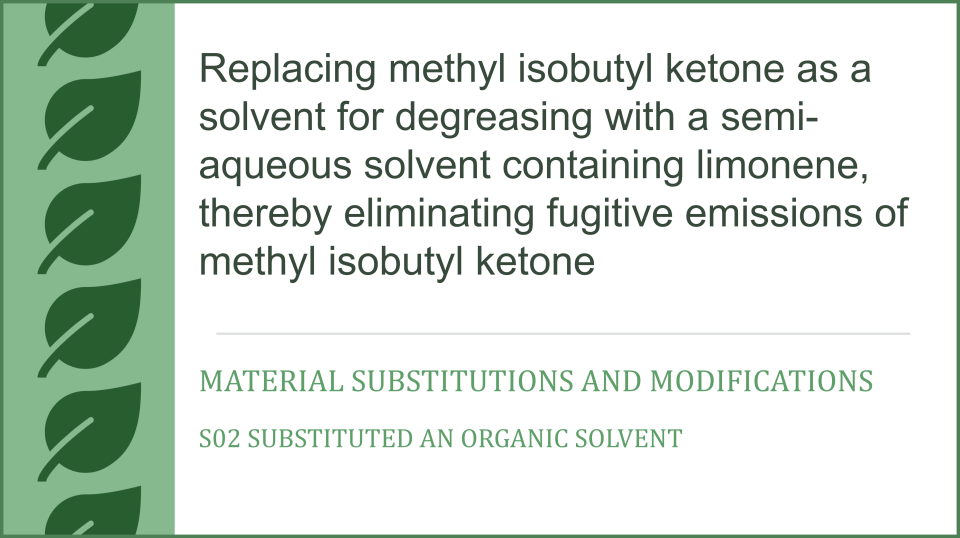
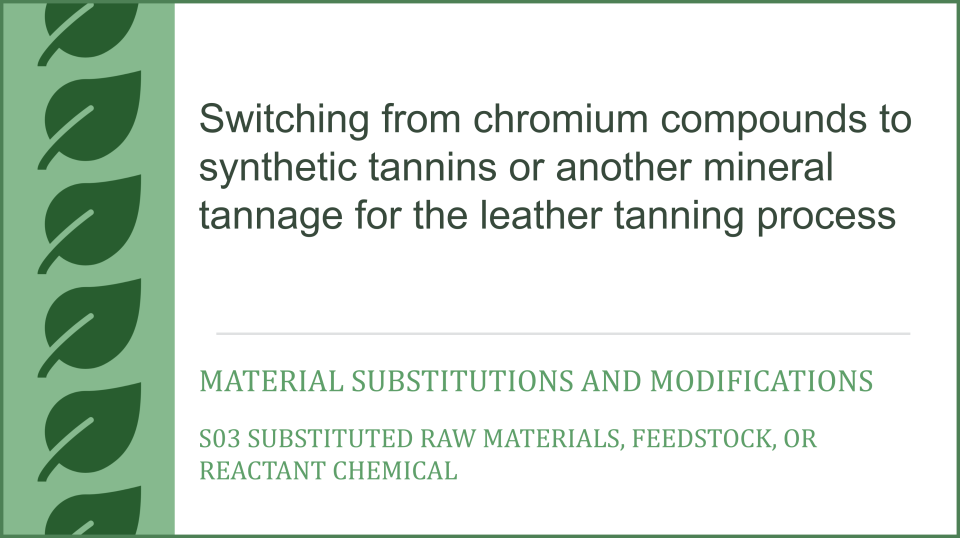
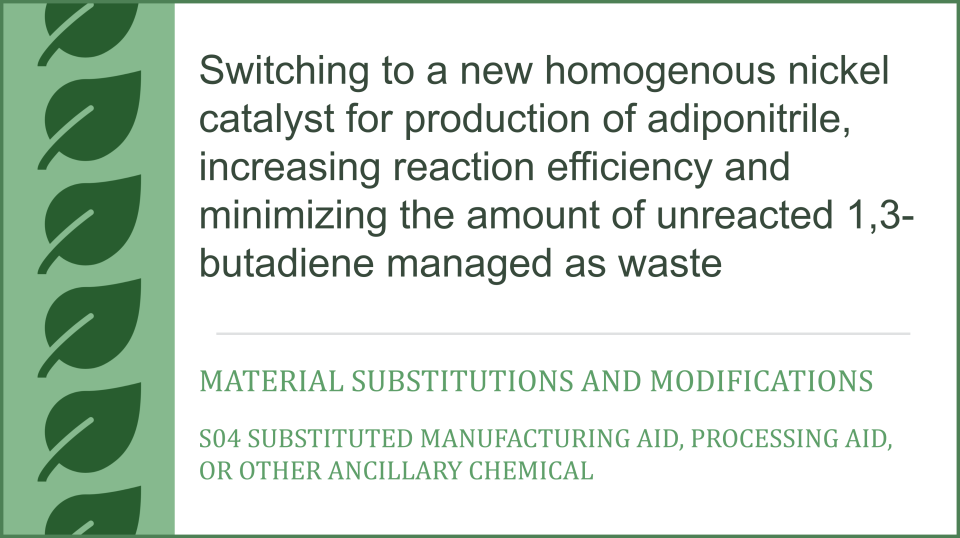


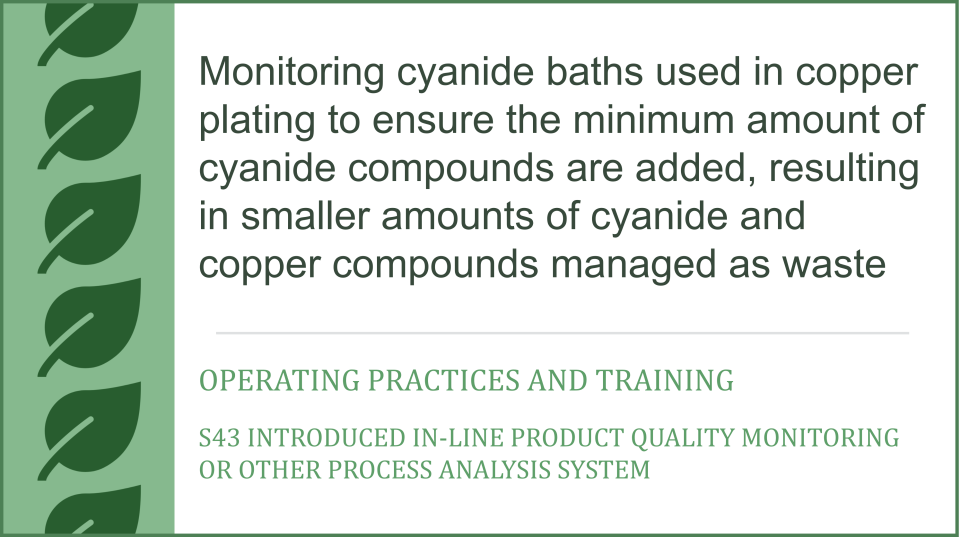
EPA Resources
EPA's Green Chemistry Program

- Learn about green chemistry and EPA's efforts to encourage its adoption
- Read about green chemistry challenge-winning technologies
EPA's Safer Choice Program

- Learn how to become a Safer Choice partner
- Find products made with safer ingredients
